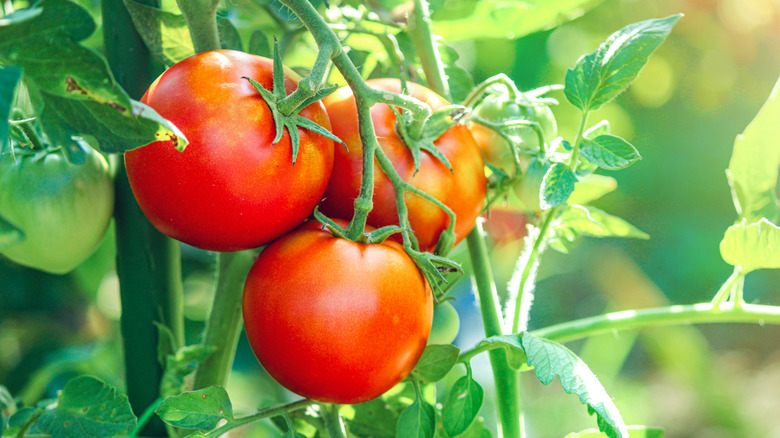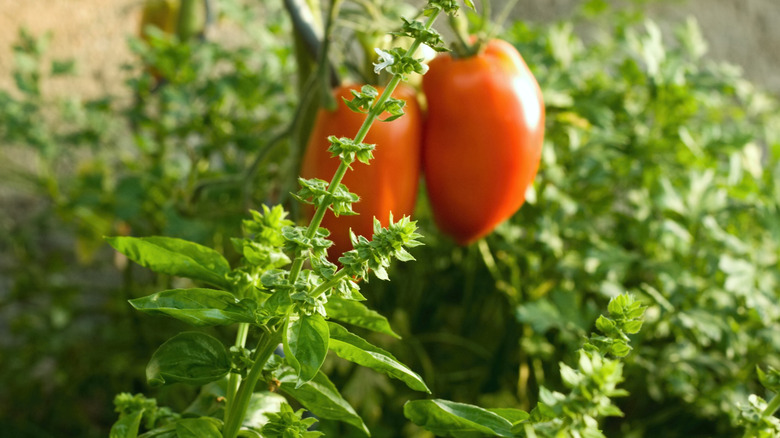The Popular Kitchen Herb That Grows Perfectly With Tomatoes
Tomatoes are stars of the summer garden, but even a star can benefit from supporting actors. Pairing your tomatoes with the right companion plants can help them grow better and provide you with even more delicious garden bounty. One of the best herbs to grow alongside your tomatoes is basil. Not only do they complement each other perfectly in a variety of recipes, but they also grow in similar conditions. There's even evidence that basil can help you grow more and healthier tomatoes.
While some vegetable garden companion planting recommendations don't have a lot of science behind them, that's not the case with the basil and tomato pairing. A study from Rappahannock Community College, as well as many gardeners' personal experiences suggests that the fuller and lower growing basil plants do a great job keeping tomato plants' roots' cool, resulting in healthier roots and more tomatoes. Additionally, if your basil begins to bolt, its flowers will help attract even more pollinators to your garden, which can help ensure good pollination of your tomatoes, as well. While there is also a myth that growing basil alongside tomatoes can help give the tomatoes a stronger flavor, this does not seem to be true.
Growing basil and tomatoes together in the garden
Both tomato and basil plants thrive in full sun locations. They also both appreciate well-draining and slightly acidic soil. This makes planting them together a snap. Just make sure that you arrange the plants so your taller tomatoes don't shade out your shorter basil. They also require regular, but not excessive, watering. Additionally, they both need warm weather, with basil struggling in temperatures under 40 degrees Fahrenheit, while tomatoes begin to struggle when temperatures dip below 60 degrees. So be sure not to plant them out too early.
If you're looking for additional plants to grow with your basil and tomatoes, be aware that there are some herbs and vegetables you don't want growing near basil. Others, like onions, are great options though, and can even benefit your tomatoes. In some cases, onions appear to deter rabbits and other pests from bothering tomato plants. Marigolds are also a popular companion for tomatoes and may help to reduce thrips. The pretty flowers are also known for preventing root-knot nematodes, though it requires a significant number of the plants to effectively use marigolds as pest control.

